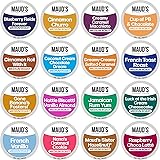Mastering the Perfect Espresso at Home: A Guide to Expert Brewing
Brewing the perfect espresso at home is achieved through careful attention to detail. The video above provides an excellent visual introduction to key steps. This guide expands on those fundamentals, offering deeper insights into creating a truly exceptional home espresso. Precision and consistency are central to every delicious shot.
Each component of the brewing process significantly impacts the final taste. From bean selection to the moment the shot is pulled, quality is paramount. Elevating your home espresso experience can be a rewarding journey. The subtleties of flavor are unlocked by meticulous technique. Expert results are within reach for any passionate home barista. This detailed approach ensures every cup is a masterpiece.
The Foundation: Selecting Your Coffee Beans for Perfect Espresso
High-quality coffee beans are non-negotiable for superior espresso. Freshness profoundly affects aroma and taste. Beans are ideally purchased shortly after their roast date. Older beans lose vital oils and nuanced flavors. A good roast date window is typically within two weeks. Quality beans provide a richer, more complex profile. Their natural sugars caramelize during extraction.
Different roast levels yield distinct characteristics. Lighter roasts are often brighter and more acidic. Darker roasts offer bolder, more intense flavors. Espresso blends are commonly used for balance. Single origin beans provide unique regional notes. Understanding your preference helps guide selection. Your coffee’s journey begins with the right beans.
Precision Weighing: The Science of Espresso Dosing
Accurate bean measurement is critical for consistent espresso. The perfect amount for each shot ensures repeatable results. Ground coffee quantity directly impacts extraction. Too little coffee leads to under-extraction. Too much coffee can cause over-extraction. A digital scale provides essential precision. Grams are the standard unit of measurement. Most recipes call for 18-20 grams of coffee.
Dosing directly influences the brew ratio. This ratio compares coffee grounds to liquid espresso. A common ratio is 1:2 (e.g., 18g coffee to 36g espresso). Adjustments are made based on desired strength. Consistency in dose helps dial in other variables. Every shot benefits from this foundational step. Precision weighing truly transforms your brewing.
The Grind: Unlocking Flavor Through Particle Size
Grinding coffee to a fine consistency is vitally important. Particle size significantly influences the extraction process. The aim is a texture resembling table salt, as shown in the video. Particles too coarse allow water to pass too quickly. This results in an under-extracted, sour espresso. Fine particles create too much resistance for water. This leads to an over-extracted, bitter shot.
A high-quality burr grinder is absolutely recommended. Blade grinders produce inconsistent particle sizes. Uneven grinding causes uneven extraction. Burr grinders provide uniform particle distribution. Adjustments are often necessary to dial in the grind. Environmental factors like humidity also play a role. The correct grind is a crucial flavor gateway.
Distribution and Tamping: Creating a Uniform Coffee Bed
Evenly distributing ground coffee in the portafilter is a crucial step. Clumping within the grounds must be avoided. A level bed ensures balanced water flow. Tools like WDT (Weiss Distribution Technique) are often employed. These help break up clumps and settle the grounds. A uniform density prevents channeling. Channeling occurs when water finds paths of least resistance.
Tamping then applies firm, even pressure. This compresses the coffee into a cohesive puck. The tamper is held level and pressed down steadily. Approximately 30 pounds of pressure is commonly applied. Uneven tamping creates an uneven bed. This causes unpredictable extraction. Proper tamping is essential for a beautiful, even flow.
Beyond the Basics: Water Temperature and Pressure
Water temperature is precisely controlled in quality espresso machines. The ideal brewing range is typically 195-205°F (90-96°C). Water too hot can scald the coffee. This leads to a burnt, bitter taste. Water too cold results in under-extraction. Flavors remain muted and sour. Consistent temperature maintains flavor integrity. Thermal stability is a key machine feature.
Brew pressure is another critical factor. Standard espresso pressure is generally 9 bars. This force is necessary for full flavor extraction. Too little pressure creates a weak shot. Too much pressure can cause harshness. Many machines feature a pressure gauge. Pre-infusion is often utilized. This gently saturates the puck before full pressure. It helps prevent channeling and improve extraction.
Pulling the Shot: The Final Extraction for Perfect Home Espresso
With all preparations complete, the extraction begins. The portafilter is securely locked into the group head. The brew button is pressed to start the flow. A steady, golden stream of espresso is observed. The color changes from dark brown to a lighter hue. A timer is used to monitor shot duration. Most ideal shots are pulled between 25-30 seconds. This includes any pre-infusion time.
Target volumes are typically around 36-40 grams for an 18-20 gram dose. This is measured with a scale under the cup. The shot is stopped when the desired weight is reached. Visual cues alone can be misleading. A beautiful crema should form on top. The perfect espresso is now ready to be savored. Each step contributes to this delightful outcome.







